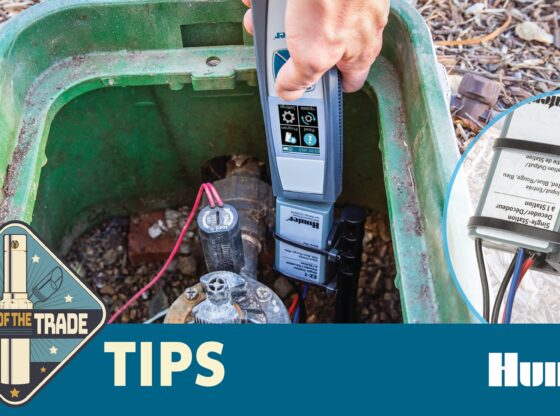Excess water is never good for a landscape. Any landscaper will tell you they have replaced many trees or shrubs that have been killed by too much water. Add to that the mess, unsightly appearance, and maintenance problems poorly drained areas cause.
Poor draining soils and/or improper grade are usually the cause of drainage problems.
Applications of a few collection basins and a little drain tile will almost always fix the problem. This is a service that any landscaper or irrigation should be able to provide. It is also a service that is required for several properties.
Isn’t drainage hard to do right?
A quick answer is no. All you have to do is set up a situation where gravity does its thing. However, you can make common mistakes, which renders the drainage useless. So a more complete answer might be drainage is simple, but you have to do it right.
What are some of the common mistakes?
Lets keep in mind the goal of drainage in the landscape is to remove excess water from the landscape. Since excess water normally accumulates because of rainfall we have the task of quickly removing it from the surface. Here are some of the typical problems;
Collection
You have to use collection basins of some type. Many will install perforated drain tile subsurface believing the excess water will infiltrate down and enter the tile. Several problems then arise.
- Excess water will enter subsurface drain tile but only due to gravitational drainage. Very little of the water moving through a soil to the depth of the tile is due to gravitational drainage.
- You have to wait for the water to percolate through the soil, which can require many hours. In some soils it may not be able to because of the soil’s density or surface sealing.
- Perforated tile will plug and become useless. There’s nothing that stops the plugging! Put gravel around it and the gravel seals shut with soil particles. Besides, it’s usually the water on the surface we want to get rid of not that being held in the soil profile.
A collection basin allows surface water to quickly enter the drain piping and be moved away. You have to use collection basins for long-term drainage success.
Poor placement of basins
It must be determined where the low spots are in the landscape. That’s where the basins should be installed.
- Drainage grade not maintained: Remember, gravity does the work. From the point of entry the water must have a continuous path for gravity drainage to the point of discharge.
- Insufficient collection basins: A large landscape and/or one that experiences a lot of excess water needs to enough basin and tile capacity to move the water in a timely manner. Charts and some formulas make sizing a drainage system easy. Most residential properties are handled by standard 4” drain tile.
Drainage Methods
There are two effective drainage methods. Either grade the property so water will run off on its own or install collection basins and pipe the water away. The use of “French Drains” will only provide temporary drainage. In heavy clay soils, like perforated tile, the entry of water into a French drain will be impeded as the surface and the gravel bed fill with soil and seals over.
Another drainage consideration is the holes dug for new trees. In heavy soils we are essentially creating a bowl that collects water. Grading is not going to help. Perforated tile will at least work for a while. In a couple of years the planting media and the native soil will merge enough for natural soil percolation to remove excess water.
Is PVC or corrugated tile used?
Either will work. Corrugated tile is by far the favorite because it is easier to handle, does not require glued splices, and lays in the trench easier.
Are there products for downspouts?
Moving water from the downspouts is a common occurrence. There are adapters to attach to about any sized downspout and it can be attached to the same in ground tubing draining the rest of the property. There is even a pop-up cap that pops up to allow water to exit the tubing then pops down to avoid mowers.












I’ve notices some large puddles in my yard after recent rains. I think it may be due to poor drainage. Is it hard to fix the drainage grade of my landscaping to make sure the water keeps moving? I think I’ll call in a professional instead of trying to handle this one on my own. Thanks for this information!